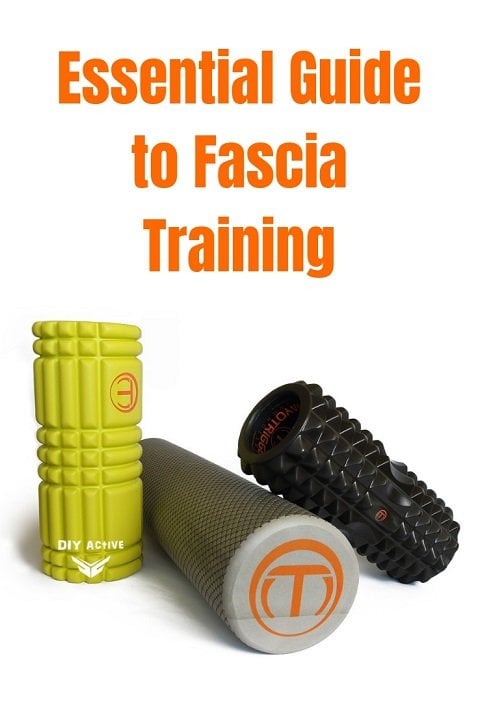
How To Fascia Training Guide
Fascia Training is a relatively new concept to make it into the fitness world, where the focus is placed on the connective tissues surrounding the muscles over the muscles themselves. Before we talk about fascia exercises, first let’s cover what fascia actually is.
Fascia training 101
Fascia is the connective tissue that runs through your entire body surrounding your muscles, organs, and bones.
It is the largest sensory organ in the body, having more surface area than the skin, and has four basic functions:
- Shape
- Move
- Communicate
- Support
When healthy, the fascia is resilient, allowing it to be flexible and resistant to injury.
Fascia that is impeded or constricted may cause pain, lack of movement, and other restrictions that interfere (and may be caused by) daily life or exercise.
A solid fascia exercise program will help increase both strength and flexibility and decrease injuries, pain, or discomfort caused by restricted or tight fascia.
How do you train your fascia?
Almost everybody has seen their counterparts at the gym or after a fitness class laying on a foam roller going back and forth or smashing various body parts into some sort of rubber ball.
While these do help with fascial health, there is a little more to fascia exercise.
There are four different ways to exercise your fascia and a healthy fascia exercise program will contain components from each of them while considering outside factors as well.
The fours ways to exercise your fascia are:
- Fascial stretching
- Rebound focused movements
- Proprioception (spatial awareness) movements
- Fascial release
Fascial Stretching
One extremely popular way to stretch your fascia is yoga. Almost every yoga pose is a full-body movement of some sort, even though it may have a particular focus on one body part.
Not sure where to start? Try simple yoga poses to stretch your muscles and your fascia from the comfort of your own home.
Another great way to stretch, if yoga isn’t something you’re interested in, is Pilates.
While similar to yoga in its whole-body approach, lower impact, and focus on both strength and flexibility, Pilates offers a more core-focused and challenging workout.
For those on the other end of the exercise spectrum, who want something gentler than yoga, Tai Chi is another way to approach fascia stretching.
 Rebound Focused Movements
Rebound Focused Movements
One of the purposes of fascia is to stretch then spring back, basically like a slinky.
When you perform a movement, the fascia and other connective tissues need to be able to return to their normal length after lengthening.
To strengthen this, perform movements that go through the motions with dynamic exercises.
By adding in plyometric style exercises, skips, hops, taking the stairs both up and down, or simply jumping around to music you will be training the elastic storage capacity of your fascia and preventing the chronic tightening that can lead to painful conditions such as plantar fasciitis.
Try adding in a dynamic warm-up of high knees, butt kicks, speed skaters, and plyometric pushups before your workout or as a standalone fascia exercise day.
Proprioception
Becoming aware of where you actually are in space or in relation to your environment is proprioception, strengthening this helps your fascia support and communicate better.
Allowing you to have more coordination and to move more smoothly, whether you are in the gym or going about your daily life.
Fascia exercises for proprioception are done slowly, with control, and ideally provide some sort of challenge for your balance or stability in some aspect.
Fascial Release
The last aspect of fascia exercise is probably the most widely recognized one, fascial release.
Otherwise known as foam rolling or using some other tool to perform a myofascial release.
The lymph and fluid in the fascia are stimulated through the pressure and release provided by the tool, allowing fluid exchange and removal of metabolic waste that accumulates.
Foam rolling for myofascial release should be done slow and steady, save the fast foam rolling for your pre-workout routine to get your muscles ready to work.
For the parts, you can’t reach or you aren’t the do-it-yourself type, try a myofascial massage by a massage therapist.
What else can influence fascia?
Obviously, we are all made differently and this will play a huge role in how we move.
So allow for individuality and don’t compare yourself to the person next to you in any form of movement. Focus on how it feels for you.
Hydration is key to fascia health, you can do all the exercises you want but if your body doesn’t have enough water to keep your muscles and fascia hydrated, you will end up with some sort of restrictions.
Rest and recovery allow the fascia (and your muscles) to recover and repair themselves.
This makes you stronger, more flexible, and less likely to injure yourself.
Nutrition also plays a part in your connective tissue and should be considered with fascia exercise.
The less inflammatory foods you eat, the better your body can move and the less pain you will feel. A diet that limits red meat, sugar, and refined carbohydrates are better for connective tissue health.
Along with ensuring you are getting adequate amounts of vitamin c and collagen as both are necessary for connective tissue health.
Wrap-Up
There are many benefits to fascia exercise that will help you in and out of the gym.
Once you start moving better with less pain, you won’t want to stop.
- The Essential Guide to Fascia Training - November 26, 2023
- 5 Non-Surgical Lower Back Pain Relief Options - April 9, 2018



